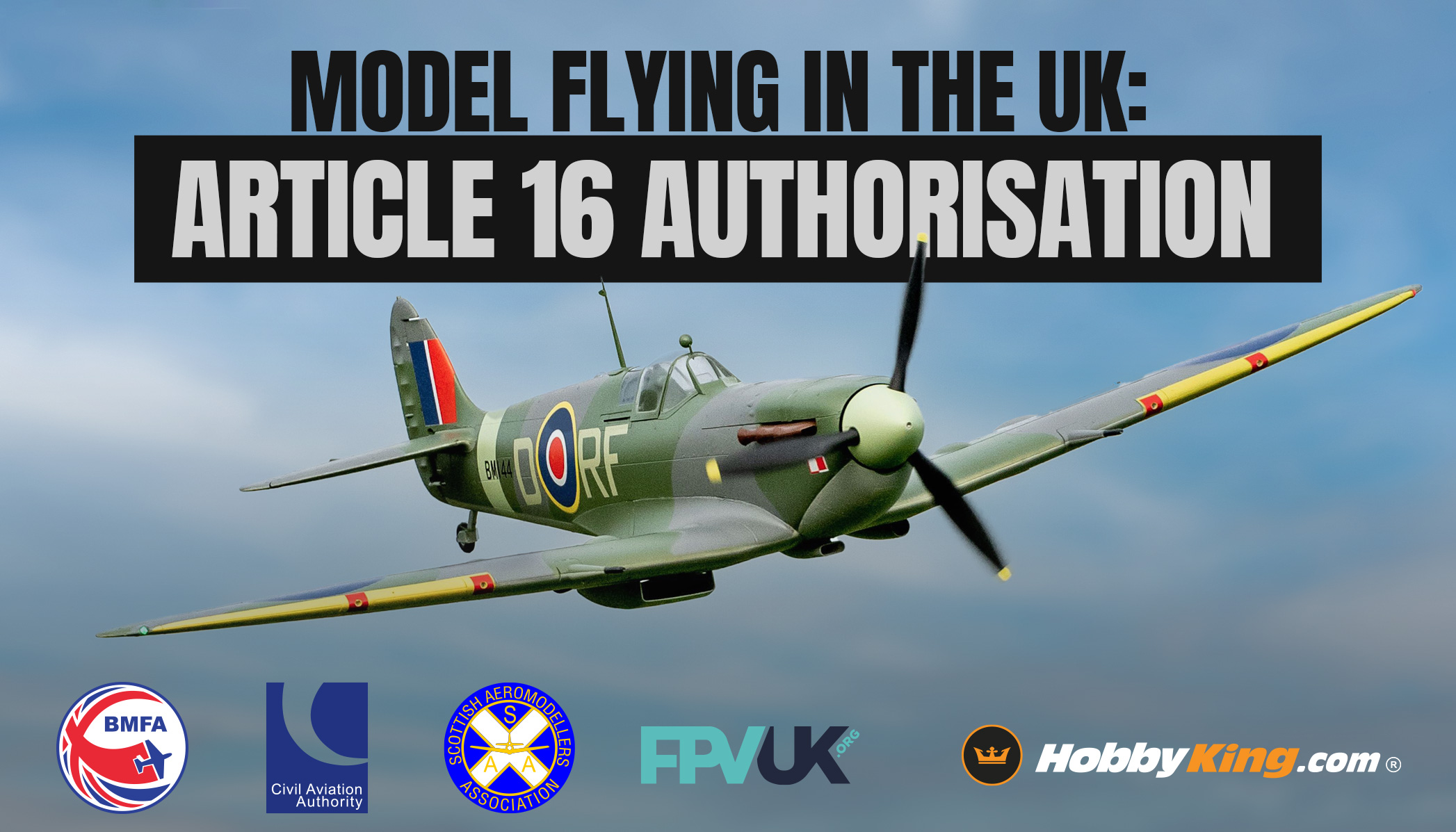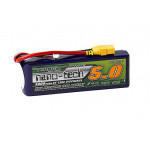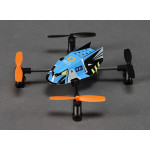
As of 31 December 2020 (Post-Brexit), all unmanned aircraft operations in the UK must adhere to the eighth edition of the CAP 722: Unmanned Aircraft System Operations in UK Airspace. However, members of model flying clubs including the British Model Flying Association (BMFA), Scottish Aeromodellers Association (SAA), Large Model Association (LMA), and FPV UK may choose to comply with a set of more flexible regulations that is known as “Article 16 Authorization”.
Sanctioned by the Civil Aviation Authority (CAA), Article 16 essentially allows British hobbyists to fly with more leeway while retaining most of what (and how) they already do. In today’s blog, we will look at everything you need to know about Article 16, and how you can legally and safely operate your RC models in the UK airspace.
Types of Unmanned Aircraft Included Under Article 16
According to section 7.1 of the authorization, all free-flight and constrained (control line or round-the-pole) RC aircraft including RC planes, helicopters, and drones with a “Maximum Take-off Mass” (MTOM) of 25KG are eligible to fly under Article 16.
Models with an MTOM of over 25KG are subject to a separate authorization: The Over 25KG Scheme which is currently under revision and will soon be published by the Large Model Association – more information can be found here.
Legal Requirements: Operator and Remote Pilot
As an operator – the person or organization that manages how an Unmanned Aircraft is used -, it is a legal requirement to register with the CAA and receive an “Operator ID”. Once received, the Operator ID number must be displayed on your aircraft or placed within an easily accessible compartment.
As a remote pilot – the person responsible for carrying out the flight-, it is a legal requirement to obtain a “Flyer ID” by taking and passing the CAA online DMARES Test; or to have a valid competency certificate as issued by your respective model flying association.
General Conditions and Prerequisites for Flying Under Article 16
- The operation of flight must strictly be for recreation, sport, education, or demonstration purposes; commercial operations are not covered.
- The operation must be within direct and unaided visual line of sight, allowing you to clearly monitor your UA’s flight path in relation to other entities (aircraft, persons, vehicles, etc.) for the purpose of avoiding collisions.
- You must not fly under influence (medical prescriptions, drugs, alcohol, etc.) or when deemed unfit (fatigue, injury, sickness, etc.).
- You must ensure that your intended site of flight is not within, or near restricted airspace, prohibited areas, and areas with emergency response.
- Before the flight, you must be familiar with your aircraft’s manual (if applicable), ensure that your aircraft is in a condition to complete the flight safely, and comply with the rules (and procedures) as laid out by your club.
- While dropping of articles is permitted, you must ensure that any articles dropped must not endanger any persons or property.
Separation Distances from Uninvolved Persons & Assemblies of People
NOTE: Uninvolved Persons is defined as persons who are not participating in the UAS operation while Assemblies of People is defined as gatherings where persons are unable to move away due to the density of people present.
Aircraft with an MTOM under 250g: no minimum separation distance.
Aircraft with an MTOM between 250g – 7.5KG: must be operated at least 30m away from assemblies of people and/or any uninvolved persons.
Aircraft with an MTOM between 7.5KG – 25KG: must be operated at least 50m away from assemblies of people and 30m away from any uninvolved persons.
Altitude (Height) Restrictions
While CAP722 limits the operations of UAs to 400ft, Article 16 permits members to fly over 400ft when:
- The UA has an MTOM below 7.5KG.
- The UA is not a rotorcraft with more than one lift generating rotor or propeller and does not have automatic flight capabilities (flight stabilization or flight termination functions excluded).
- The UA is not operating within, or near restricted airspace, prohibited areas, and areas with emergency response.
- The UA must remain within the visual line of sight of the remote pilot.
- If a manned aircraft appears within proximity, the UA must be immediately brought down to under 400ft in a safe manner.
So Where Can I Actually Fly?
You can fly under Article 16 throughout the UK at:
- Any model flying club site which has passed the risk assessment and with suitable mitigations if applicable.
- Any suitable area which is not substantially used for industrial, recreational, commercial, or residential purposes. E.g., farmland or your own yard.
- An area that is only used substantially for recreational purposes if such area is supported by a risk assessment (BMFA, SAA, LMA, or FPV UK can help with the risk assessment). E.g., parks or sports grounds.
Other EU and UK Unmanned Aircraft Regulations
If you are interested to learn more about the updated regulations on unmanned aircraft in the EU or UK, you can read our blogs: Post-Brexit RC Model Flying in the UK: Cap 722 and New EASA (EU) Regulations for Unmanned Aircraft – Everything you Need to Know.
To get the latest news and updates regarding unmanned aircraft operations in the British airspace, then keep in touch with us by following us on Facebook or Subscribing to our Emails.
---
Hear it First: Join our Mailing List
Sign up to receive new product updates, exclusive discounts, news, and more!






